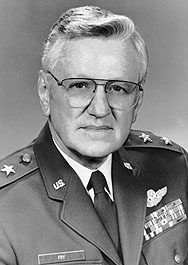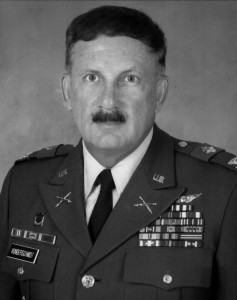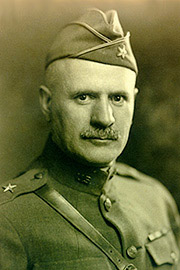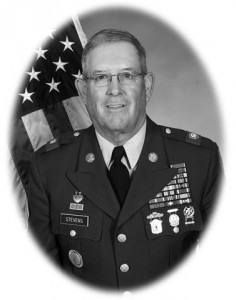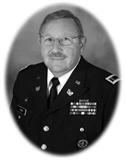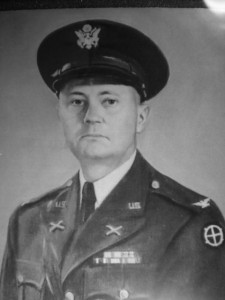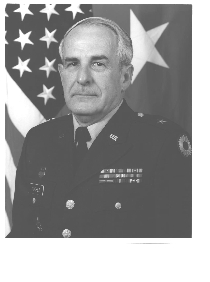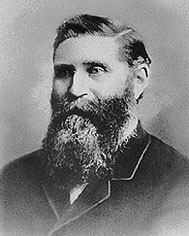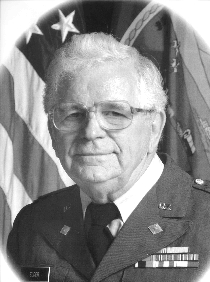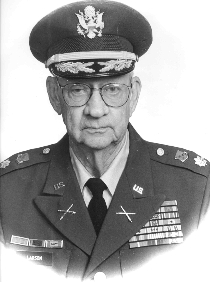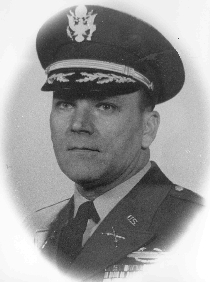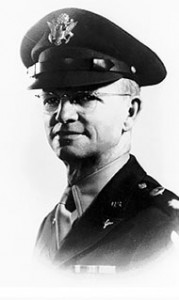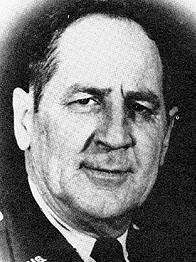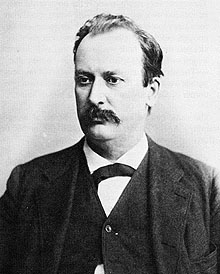On the 3d of August, 1862, Brig. Gen. J. G. Blunt, commanding the Department of Kansas, issued orders to Maj. C. W. Blair, 2d Kansas Cavalry, empowering him to raise and command a Battery of Light Artillery, the guns for which – two 12 pdwr. field howitzers and four 6 pdwr. guns, all iron, and rebel manufacture – were then at Fort Scott, Kansas.
The work of organization was commenced immediately. On the 15th of August four recruits were enlisted; on the 25th E. A. Smith was mustered in as 1st Lieutenant, and on the 10th of September the entire Battery was mustered in at Fort Scott with an aggregate of one hundred and twenty-three officers and men, and was designated the “2d Kansas Battery.” On the 19th of September Lieutenants Knowles and Wilson were mustered in. The officers were then:
C. W. Blair, 2d Kansas Cavalry, commanding.
1st Lieutenant – E. A. Smith, muster August 25, 1862.
1st Lieutenant – D. C. Knowles, muster September 19, 1862.
2d Lieutenant – A. G. Clark, mustered September 10, 1862.
2d Lieutenant – A. Wilson, mustered September 19, 1862.
The Battery was immediately assigned to what was afterwards the 1st Brigade, 1st Division, Army of the Frontier. On the 13th of September the Brigade, started into Missouri, and Lieutenant Clark, with one section of the battery, accompanied it. Passing through Carthage, the command moved east as far as Greenfield, and returned, via Mount Vernon, to Sarcoxie. In the second engagement of Newtonia – October 4th – Lieutenant Clark had an opportunity of throwing a few shells at the retreating enemy. The pursuit, by way of Keetsville, Mo., arrived at Pea Riodge, Ark., on the 18th of October, making a total march of not less than two hundred and fifty miles.
On the 22d of September, Lieut. Smith, with another section, was ordered to accompanied the 3d Wisconsin Cavalry, under Col. Barstow, on an expedition to Monticello, Mo. The expedition found no enemy of consequence, and returned in a week, having marched about ninety miles.
He remained in camp at Fort Scott until the 12th of October, when he started with another section, in company with the 11th Kansas, commanded by Col. Ewing, to join the Army of the Frontier. The march was rapid and without incident, by way of Preston, Carthage, Newtonia and Keetsville, Mo., arriving at Pea Ridge – where he joined Lieut. Clark – on the 19th of October. His command then consisted of four guns. Lieuts. Clark and Wilson commanding sections.
The battery remained at Pea Ridge until the 29th of October, when the Brigade marched to Bentonville; October 30 marched to Maysville; October 31 returned to Spavinaw, Ark., where the Division encamped until the 3d of November, when it marched southeast about eight miles to Camp Bowen. On the 13th of November the Division moved southwest on the Tahlequah road to Lindsey’s Prairie. The camp was known as Camp Babcock. The occupation of Cane Hill by the rebel Gen. Marmaduke with a large force of cavalry about this time, determined Gen. Blunt to give them battle and, if possible, drive them over the Boston Mountains. The movement in that direction commenced on the 27th of November, the 2d Kansas battery being left to guard the immense brigade and supply trains which were parked on Lindsey’s Prairie. On the 29th, these trains were ordered forward, and moved as far as Rhea’s Mills.
Owing to the fact that the battery had never received advanced pay or bounty, General Blunt ordered it back to Fort Scott to be paid and reorganized. The return march commenced on the 3d of December, and the battery arrived at Fort Scott on the 10th, having marched in all, since leaving Pea Ridge, about two hundred and fifty miles.
The entire battery remained at Fort Scott until about the 1st of May, 1863. Gen. Blunt having ordered the establishment of a post at Baxter Springs, one section, under Lieut. Knowles, was sent to that point, together with the 1st Kansas Colored Infantry. On the 18th of May, a foraging party, consisting of fifty or sixty soldiers, in wagons, and some twenty-five artillerymen, mounted, was started into Missouri. About three miles southeast of Sherwood the party was attacked by a force of three hundred guerrillas, under the notorious Livingston. Many of the colored troops were killed, and the rest scattered into the brush. The artillerymen made the best defense they could; but armed only with revolvers, and overwhelmed by numbers, they were compelled to retreat. They were pursued to Spring River, and Corporal V. R. Hancock and privates Cameron Garrett and Joseph Endecott were killed, privates Haley Pipkin and D. J. Whetshire were taken prisoners. The prisoners were afterwards exchanged. On the 18th of May, Livingston captured the herd belonging to the battery, which was guarded by Corporal Thomas Larkin and privates James Martin and Arthur W. Gaines. The latter was killed in attempting to escape, and Larkin and Martin were taken prisoners and afterwards murdered.
The section remained at Baxter Springs until the 24th of June, when Lieut. Smith turned over the guns (two 12-pounder iron field howitzers) and horses to Capt. Armstrong, of the 1st Kansas Colored, and brought the men back to Fort Scott. He had previously replaced the howitzers with two 12-pounder brass field guns. The weight of these guns rendered it necessary to work eight horses on each carriage. About this time the battery completely refitted with new harness.
On the 19th of June Lieut. Wilson reported with his section of 6 pounders to Lieut. Col. Dodd, commanding 2d Colorado Infantry to accompany a large supply train to Fort Gibson. On the lst of July, the train was attacked by a strong force of rebels under Stand Waite at the crossing of Cabin Creek. Lieutenant Wilson’s guns participated in the action, and his fire was very effective. The enemy was completely routed and driven from the field, and on the 4th of July the train arrived at Fort Gibson in safety.
Major Blair having been assigned to the command of Fort Scott, resigned the command of the battery on the 3d of April, 1863, and on the 4th of July Lieut. E. A. Smith was mustered as Captain. On the 8th of August following 2d Lieutenant A. G. Clark was mustered as lst Lieutenant and 1st Sergeant Wm. Requa as 2d Lieutenant.
The situation of affairs in the Indian country during the month of June, 1863, became extremely critical, and Gen. Blunt, now commanding the District of the Frontier, found it necessary to repair to the front and conduct operations in person. Accordingly on the 5th of July he started from Fort Scott with a detachment of cavalry and the 12-pounder section of the 2nd Kansas battery, under Capt. Smith, and proceeded by forced marches to Fort Gibson, where the command arrived on the 12th, after a toilsome march of one hundred and sixty-live miles.
Immediately preparations were made to attack the enemy on his own ground. On the 15th of July marching orders were issued, and at 3 a.m. of the 16th, Lieut. Wilson’s section was ordered out. Crossing the Verdigris a couple of miles above the Falls, the command – which consisted of the 6th Kansas cavalry and Lieutenant Wilson’s section, led by General Blunt in person – arrived at the ford of the Arkansas, opposite the Creek Mission, about daylight. A small picket guard of the enemy was the only force to dispute the passage, and it retreated without firing a shot. After fording the river, Gen. Blunt proceeded down the south bank to a point opposite the mouth of Grand River, where he was met by the balance of his forces. The crossing was effected partly by fording and partly in boats, and owing to the depth and rapidity of the current, was a work of great difficulty, occupying five or six hours.
At 10 p. in., the command moved forward on the North-Fork Town road. The enemy’s pickets were driven in about daylight and followed up rapidly a distance of five miles, when their main force was found strongly posted on the line of Elm Creek, in front of Honey Springs.
The battle commenced about 10 a.m. of the 17th, and continued until 2 p.m., ending in a complete route of the enemy. The 2d Kansas battery took a prominent part in the engagement, and contributed materially to the defeat and demoralization of the rebels. Although exposed to a heavy fire, but one man – private W. C. Caskey – was wounded. Eleven horses were severely wounded and subsequently died.
The evening of the 18th, the command took up the line of march for Fort Gibson, where it arrived on the morning of the 19th, and remained encamped in the vicinity until the 22d of August, when the campaign to Perryville, Choctaw Nation, commenced.
The river was crossed, and the command encamped at night at old Fort Davis. The following morning the march was resumed by way of Honey Springs, crossing the Canadian below the mouth of North Fork and arriving at Gaines’ Creek on the 26th. The cavalry advance having pursued the flying foe as far as Perryville, returned to Gaines’ Creek on the morning of the 27th. Here the command was divided, the lst Brigade – to which the battery belonged – returning to Fort Gibson by way of the Grayson plantation, North Fork Town and Honey Springs, and arriving at Fort Davis on the 31st of August, having marched over one hundred and sixty miles.
Capt. Smith left the battery on the 19th of September and went to St. Louis after new guns. He succeeded in obtaining four 10 pounder Parrots, with which he rejoined his command in December following.
In the month of October the lst Brigade moved to North Fork Town and remained several weeks, during which time Lieut. Wilson, with one gun, accompanied a scouting expedition to Perryville.
In the month of November the battery was ordered to Fort Smith, Ark., where it arrived about the 15th, and here the headquarters remained until the battery was ordered to Leavenworth for muster out.
In the month of June, 1864, Lieut. Clark’s section was ordered to Clarksville, Ark., where it remained until near the close of July. While here, the herd was one day attacked by a party of guerrillas. The herders promptly formed and with their revolvers routed the rebels and drove them into the brush.
On the 31st of July, rebels drove in our pickets at Fort Smith, and Capt. Smith was ordered out with Lieut. Clark’s section to reinforce Col. Judson, who, with a small cavalry force, was skirmishing with the enemy’s advance.. Taking a position about a mile beyond Fort No. 2, on the Texas road, he opened with such effect as to silence the rebel battery at the first shot. The fire was then directed on a heavy rebel cavalry line, and in fifteen minutes they were driven from the field in great confusion. The practice was greatly commended by the officers present, including Gen. Thayer.
During the fall of 1864 and the winter of 1864-5 there was much suffering among the troops, owing to the scarcity of commissary supplies, but it was borne with great fortitude and even without complaint.
In the spring of 1865 the old guns were exchanged for three inch Parrots, and the battery was completely refitted and placed in the best possible condition in point or discipline and efficiency, with the expectation of participating in the Texas expedition then organizing.
When Capt. Smith was ordered south in July, 1863, Lieut. Knowles was left at Fort Scott with one section of the battery. Here he remained until the summer of 1865, when he rejoined the battery by way of Kansas City, St. Louis, Memphis, Du Vall’s Bluff and Little Rock. He was on several occasions sent out to escort trains, and to points threatened by the enemy. During the celebrated Price raid his section constituted a part of Col. Blair’s Brigade, with which it participated in the march to Kansas City and the battle of Westport, and also in the pursuit of the rebels beyond Fort Scott.
By Special Orders No. 81, from Headquarters Department of Arkansas, dated April 3d, 1865, forty enlisted men and four under cooks, colored, the remnant of the 3d Kansas battery, were transferred to the 2d Kansas battery. These men, however, were kept at Little Rock on detached service with battery K, 1st Missouri Light Artillery, and never joined their proper command until it was ordered home for muster out.
On the 21st of July, the orders for muster out were received from Department Headquarter. During the day all government property, including guns, horses, etc., was turned over to proper officers and by night the battery was on board the boat en route home. The passage was by water, a distance of seventeen hundred miles, and occupied just seventeen days, the battery landing at Leavenworth on the night of the 8th of August. On the 11th it was mustered out by Capt. Kimble, and the 15th – three years, to a day, from the date of the first enlistment – it was paid off by Maj. D. M. Adams.
In conclusion, I feel warranted in saying that no finer body of men were mustered into the United States service during the war. Prompt in the discharge of every duty; enduring hardships and privation with the philosophy of veterans; cheerfully yielding to the requirements of discipline, they were well worthy of the many encomiums they received from commanding and inspecting officers.
Though not often called upon to pass through the fiery baptism of battle, the 2d Kansas battery ever enjoyed the entire confidence of its Brigade and Division Commanders, for they knew it would not be found wanting in the hour of trial.
E.A. Smith, Late Captain 2d Kansas Battery.
Memorandum from the Muster Rolls
The 2d Kansas Battery was organized by Major Charles W. Blair, 2d Kansas Cavalry, under orders from Brigadier General Blunt, commanding the Department of Kansas. Two sections (four guns) under the command of Lieutenant Smith, accompanied the Army of the Frontier, in the fall of 1862, as far as Rhea’s Mills, Arkansas, after which it returned to Fort Scott, Kansas, having marched a distance of five hundred miles. The sections remained in camp at Fort Scott during the winter of 1862-3.
Lieut. Knowles, with a section, went to Baxter Springs, Kan., May 1, ’63 – sixty-five miles. June 18, ’63, lost three men killed in action at Sherwood, Mo. Returned to Fort Scott, June 24, ’63.
Two sections, under Capt. Smith, participated in the campaigns in the Indian country in the summer and fall of 1863, taking part in the battles of Cabin Creek, C. N., July 1 and 2, ’63, and of Honey Springs, C. N., July 17, ’63.
Went to Fort Smith November, ’63, where it remained until July, ’61.
One section, under Lieut. Clark, went to Clarksville, Ark. – sixty-five miles – in June, ’64, and returned in July of the same year.
July 31, ’64, was engaged with a rebel battery near Fort Smith, and defeated them handsomely.
Returned to Leavenworth for muster out, leaving Fort Smith July 21, ’65, and arrived at the former place August 8, ’65.
(SOURCE: Report of the Adjutant General of the State of Kansas, 1861-’65. Topeka, Kansas: Kansas State Printing Plant (1896 reprint). Transcription provided by Jeff Dunaway, Civil War Round Table of Eastern Kansas.)

 Maj Gen David Weishaar
Maj Gen David Weishaar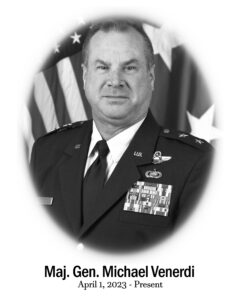


 First Sergeant Darrel W. Haeffele was born on September 25, 1940, in Falls City, Nebraska. He graduated from Atchison High School in 1958. He attended Concordia College in Seward, NE for two years before starting a career in retail.
First Sergeant Darrel W. Haeffele was born on September 25, 1940, in Falls City, Nebraska. He graduated from Atchison High School in 1958. He attended Concordia College in Seward, NE for two years before starting a career in retail. CW5 Roland E. “Ron” Kassebaum was born on February 21, 1946 in Deshler, Nebraska. He graduated from Hebron High School, Hebron, Nebraska in 1964. He attended Fairbury Junior College, Fairbury, Nebraska and the University of Nebraska, Lincoln, Nebraska, and received a Bachelor of Science Degree from the University of the State of New York in 1991. He later attended Liberty University, Lynchberg, Virginia, for courses in accounting and Allen County Community College, Iola, Kansas, for a course in Business Law.
CW5 Roland E. “Ron” Kassebaum was born on February 21, 1946 in Deshler, Nebraska. He graduated from Hebron High School, Hebron, Nebraska in 1964. He attended Fairbury Junior College, Fairbury, Nebraska and the University of Nebraska, Lincoln, Nebraska, and received a Bachelor of Science Degree from the University of the State of New York in 1991. He later attended Liberty University, Lynchberg, Virginia, for courses in accounting and Allen County Community College, Iola, Kansas, for a course in Business Law. Chief Warrant Officer Four Ronald E. Mullinax was born on August 25, 1946, in Norton, Kansas to Earl and Mary Posson. He was adopted by John and Ada Mullinax. He grew up in Lenora, Kansas, graduating from Lenora Rural High School in 1965. After completing a Denver Automotive Institute training program, Ron worked at Look Body Shop in Norton until 1968.
Chief Warrant Officer Four Ronald E. Mullinax was born on August 25, 1946, in Norton, Kansas to Earl and Mary Posson. He was adopted by John and Ada Mullinax. He grew up in Lenora, Kansas, graduating from Lenora Rural High School in 1965. After completing a Denver Automotive Institute training program, Ron worked at Look Body Shop in Norton until 1968. CCMSgt Valerie D. Benton was born on Dec. 10, 1959 in Racine, Wisconsin, where she spent her childhood. She graduated from Washington Park High School in 1978. Soon after graduation she enlisted in the U. S. Air Force and headed to Basic Training at Lackland AFB, Texas in December of 1978. After completion of Basic training, she attended Technical Training at Lowry AFB, Colorado, and graduated as a Food Service Specialist.
CCMSgt Valerie D. Benton was born on Dec. 10, 1959 in Racine, Wisconsin, where she spent her childhood. She graduated from Washington Park High School in 1978. Soon after graduation she enlisted in the U. S. Air Force and headed to Basic Training at Lackland AFB, Texas in December of 1978. After completion of Basic training, she attended Technical Training at Lowry AFB, Colorado, and graduated as a Food Service Specialist.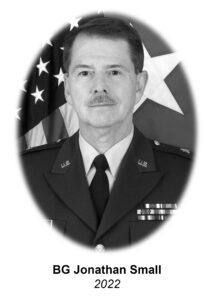 Brigadier General Jonathan P. Small served as The Adjutant General of Kansas from November 1, 2003 to January 4, 2004, culminating a 35-year military career as a distinguished attorney, community leader, citizen-soldier, and military leader. He served as Assistant Adjutant General-Army from 1999 to 2003, and as Commander of the Land Component for the Joint Force Headquarters-Kansas.
Brigadier General Jonathan P. Small served as The Adjutant General of Kansas from November 1, 2003 to January 4, 2004, culminating a 35-year military career as a distinguished attorney, community leader, citizen-soldier, and military leader. He served as Assistant Adjutant General-Army from 1999 to 2003, and as Commander of the Land Component for the Joint Force Headquarters-Kansas. General James H. Lane was a militia leader during the Bleeding Kansas period, the commander of the Kansas “Jayhawker” Brigade during the Civil War, and was one of the first United States Senators from Kansas.
General James H. Lane was a militia leader during the Bleeding Kansas period, the commander of the Kansas “Jayhawker” Brigade during the Civil War, and was one of the first United States Senators from Kansas. Sergeant Major Joseph T. “Jody” Muller was selected for the Kansas National Guard Hall of Fame for his exceptional service as a citizen soldier in the Kansas National Guard for over 41 years.
Sergeant Major Joseph T. “Jody” Muller was selected for the Kansas National Guard Hall of Fame for his exceptional service as a citizen soldier in the Kansas National Guard for over 41 years. Master Sergeant Greg Gilroy was born on July 25, 1947 at Ottawa, Kansas. He was a lifelong resident of Ottawa, graduating from Ottawa High School in 1965. He then attended Emporia State University during the 1965-66 school year.
Master Sergeant Greg Gilroy was born on July 25, 1947 at Ottawa, Kansas. He was a lifelong resident of Ottawa, graduating from Ottawa High School in 1965. He then attended Emporia State University during the 1965-66 school year.








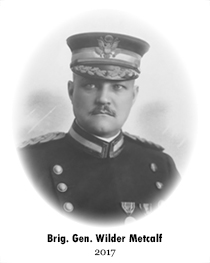

 Brigadier General Deborah Rose entered military service with a direct commission into the United States Air Force Nurse Corps in March 1983, assigned to the 184th Tactical Fighter Group. She transferred to the 190th Clinic in December 1985. In October 1990, she deployed to Jeddah, Saudi Arabia, where she served in an Air Transportable Hospital during Desert Shield. In February 1991, she was activated and deployed to Offutt AFB, Nebraska, assigned to the hospital.
Brigadier General Deborah Rose entered military service with a direct commission into the United States Air Force Nurse Corps in March 1983, assigned to the 184th Tactical Fighter Group. She transferred to the 190th Clinic in December 1985. In October 1990, she deployed to Jeddah, Saudi Arabia, where she served in an Air Transportable Hospital during Desert Shield. In February 1991, she was activated and deployed to Offutt AFB, Nebraska, assigned to the hospital.
 Sergeant Major Lynn E. Holt built his distinguished Kansas Army National Guard career developing strength, retaining Soldiers and insuring Soldiers received proper training. He served from the Detachment through State level. He is known for his ability to recognize Soldier needs at all levels. The same care he felt for Soldiers carried over into his community activities. SGM Holt’s passion for people and their needs exemplifies his true character. He devoted his entire adult life to the betterment of our nation, our state and the Kansas National Guard.
Sergeant Major Lynn E. Holt built his distinguished Kansas Army National Guard career developing strength, retaining Soldiers and insuring Soldiers received proper training. He served from the Detachment through State level. He is known for his ability to recognize Soldier needs at all levels. The same care he felt for Soldiers carried over into his community activities. SGM Holt’s passion for people and their needs exemplifies his true character. He devoted his entire adult life to the betterment of our nation, our state and the Kansas National Guard.



